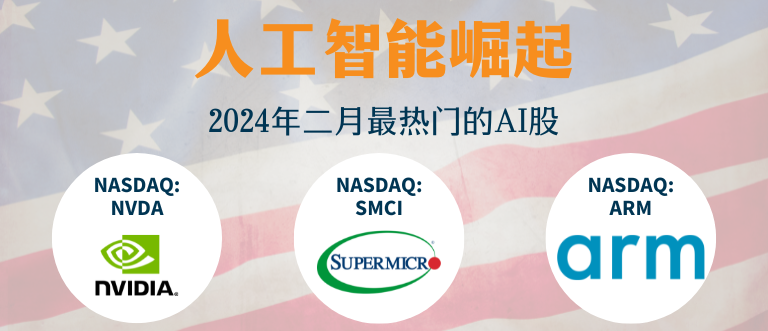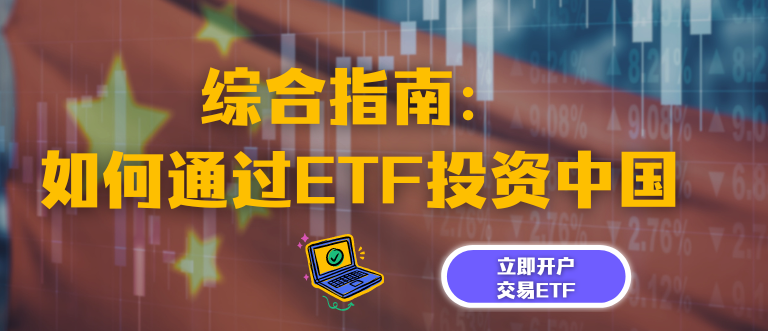Stock symbol
Table of Contents
Stock symbol
The stock symbol is a unique collection of letters and numbers that serves as a means of identification for all publicly traded companies in the fast-paced world of finance, where acronyms and numbers frequently rule the field. An essential first step in your financial journey is comprehending stock symbols, whether you’re a seasoned investor navigating the ups and downs of the stock market or an interested novice trying to decode this Wall Street cryptogram.
What is a stock symbol?
A set of letters given to a security for trading purposes is called a stock symbol or ticker. The number of letters on stocks listed on the New York Stock Exchange (NYSE) cannot exceed four. As symbols are merely a condensed form of describing a company’s shares, three-letter symbols are similar to four- or five-letter symbols. Stock symbols are sometimes known as ticker symbols.
Businesses can choose their symbols. Nevertheless, stock exchanges are in charge of verifying the symbol. As long as the symbol is unique and not deceptive, stock exchanges will allow it. A similar symbol or an exact match of the symbol may exist on other exchanges for various stocks, even if the stock symbol is unique. Additionally, multiple exchanges may use symbols for the same company’s stock.
Understanding stock symbol
For publicly traded firms on stock exchanges, a stock symbol is a unique combination of characters and occasionally digits that acts as a shorthand identification. Stock symbols are a unique code that makes tracking and trading shares in the financial markets easier. Usually only a few characters long, these symbols provide essential details about a firm, like its name, stock class, and exchange listing.
Comprehending a stock symbol is a vital component of market literacy for investors, as it allows them to discover and evaluate a company’s performance quickly, examine its shares on financial platforms, and place trades. The language of the stock market is represented by stock symbols, which offer a clear and consistent means of expressing the enormous and ever-changing universe of publicly traded companies.
Basics of stock symbol
The stock or equity symbol is the most prevalent kind of stock symbol. A maximum of four letters can be included in the stock symbols of stocks that are listed and traded on US exchanges. For instance, stocks that trade on the NYSE may have up to three letters in their ticker symbol, whereas equities that trade on the NASDAQ have four letters.
Investors use stock symbols to keep track of particular securities for trading. As the company cannot choose a symbol that carries its name due to pre-existing ticker symbols, many new stock symbols are not associated with its name. Similarly, option tickers are designed to show details from the underlying stock ticker, such as the contract type or the expiration date. On the other hand, mutual fund ticker symbols are different from ordinary stock symbols in that they are made up entirely of alphanumeric letters, with the letter X as the last character.
Types of stock symbol
The following are the various types of stock symbols:
- Common stock symbols
These are the standard symbols for a company’s common shares traded on stock exchanges. For example, Apple Inc.’s common stock symbol is “AAPL.”
- Preferred stock symbols
A company may have a separate ticker symbol if it has preferred shares with different rights and privileges than ordinary shares. For instance, Berkshire Hathaway has Class A common shares (BRK.A) and Class B preferred shares (BRK.B).
- Class designations
Some companies issue multiple classes of stock, each with its symbol. For example, Alphabet Inc. has Class A shares (GOOGL) and Class C shares (GOOG), each with different voting rights.
- Dividend classifications
Some stock symbols may include letters indicating the dividend status of the shares. For instance, “PR” might indicate that the stock pays preferred dividends.
- Suffixes for different exchanges
The same company may have different symbols on different stock exchanges. For example, Samsung’s stock may have different symbols on the Korea Stock Exchange and the London Stock Exchange.
- Special designations
Certain symbols may have special designations to indicate specific circumstances, such as bankruptcy, delisting, or under regulatory scrutiny.
Example of stock symbol
The following are various examples of stock symbols. JPM represents the ticker symbol for JP Morgan Chase & Co. common stock on the US stock exchange, NASDAQ. The common stock of Netflix Inc. is denoted by the ticker NFLX. The stock symbol for the common stock of Microsoft Corporation is MSFT. Alphabet Inc., Google’s current name, has two stock symbols for distinct share classes. The ticker symbol for Class C shares devoid of voting rights is GOOG.
Frequently Asked Questions
Stock symbols originated in the late 19th century when telegraph and ticker tape systems were introduced to transmit stock prices. Initially, brokers used abbreviations to represent companies. In 1928, the New York Stock Exchange (NYSE) adopted a standardised one- to three-letter symbols system. Today, stock symbols are crucial in global financial markets, providing quick and universal identification for publicly traded companies.
Using a stock symbol lets you get up-to-date information on a particular company’s shares by entering it into a search engine or financial platform. By serving as distinctive identifiers, stock symbols allow investors to monitor price changes, examine financial information, and place trades. They simplify navigating the broad stock market by offering a rapid and standardised way to obtain important information about publicly traded businesses.
A stock symbol is called such because it serves as a concise and unique identifier for publicly traded companies on stock exchanges. Comprising letters or numbers, it symbolises a company’s presence in the financial markets. This shorthand notation simplifies tracking, trading, and communication, enabling investors to swiftly recognise and engage with specific stocks amidst the vast array of publicly traded companies.
You can use financial news websites, stock market apps, or investor relations websites to find a company’s stock ticker symbol. Search engines like Google or Yahoo Finance also allow you to find stock symbols quickly by entering the company name and “stock symbol” or “ticker symbol.” The symbol is a short code representing the company on stock exchanges.
Companies may have two stock symbols due to issuing different classes of stock, such as Class A and Class B shares, each with unique rights. A company listed on multiple exchanges may have distinct symbols for each market. These variations enable investors to differentiate between classes or exchange listings, streamlining trading and reflecting different attributes of the company’s shares.
Related Terms
Most Popular Terms
Other Terms
- Options expiry
- Adjusted distributed income
- International securities exchanges
- Settlement currency
- Federal funds rate
- Synthetic ETF
- Physical ETF
- Notional amount
- Negative convexity
- Jumbo pools
- Inverse floater
- Forward Swap
- Underwriting risk
- Reinvestment risk
- Final Maturity Date
- Payment Date
- Secondary Market
- Margin Requirement
- Mark-to-market
- Pledged Asset
- Yield Pickup
- Subordinated Debt
- Trailing Stops
- Treasury Stock Method
- Stochastic Oscillator
- Bullet Bonds
- Basket Trade
- Contrarian Strategy
- Exchange Control
- Notional Value
- Relevant Cost
- Dow Theory
- Speculation
- Rand cost averaging
- Sustainable investment
- Stop-limit sell order
- Constant prepayment rate
- Covenants
- Companion tranche
- Synthetic replication
- Beneficiary
- Reverse stock splits
- Quiet period
- Prepayment risk
- Interpolation
- Homemade leverage
- Hyperdeflation
- Hope Credit
- Prime bank investments
- Purchasing power
Know More about
Tools/Educational Resources
Markets Offered by POEMS
Read the Latest Market Journal

本文旨在为中级外汇交易者提供必要的信息和知识。它将涵盖我们上一篇文章 “五分钟看懂世界上最活跃的市场-外汇差价合约(FX CFD)...

解锁台湾股市的投资潜力!深入了解由强大的技术驱动型经济推动的股票市场,2023 年机械和电气设备将占出口的 69%。在政治稳定、投资者友好的法规和健全的法律框架下,探索台积电和富士康等全球顶级企业。台湾股市值得称赞的历史表现和在国际贸易中的的重要性使其更具吸引力。在这个科技实力雄厚、经济稳定、充满活力的股票市场中,抓住增长机遇!

了解外汇市场 外汇交易市场又称外汇市场,是一个买卖货币的全球性金融市场。它是全世界规模最大、流动性最强的金融市场,每日交易量超过 6 万亿美元。但外汇市场有一个重要却常被忽视的一点,就是它受交易心理的影响。在本文中,我们将探讨外汇市场的复杂性,还有把重点放在交易心理与传统交易策略共同发挥的关键作用...

五分钟看懂世界上最活跃的市场 -外汇差价合约(FX CFD)
外汇交易市场俗称外汇或外汇市场,是全球金融市场的支柱。它是世界上最活跃的市场,2022 年 4 月,全球交易额达到创纪录的每天 7.5 万亿美元[1] 。这个活跃的市场为交易者提供了利用货币价格波动赚取利润的机会。在本文中,我们将解释外汇市场的基本原理,助您了解其投资机制。 什么是外汇? 外汇市场是一个分散的全球市场,世界上所有货币都在这里进行交易...

随着通胀数据趋向 2% 的理想目标,人们普遍乐观地认为,在任何可能的降息之前,市场都不会受到不利影响。以下是美股市场2024年的一些重要事件,投资者在做出投资决策时可以参考留意。

根据《东南亚态势报告:2023》,失业和经济衰退是当前东南亚面临的主要挑战。各国采取了各种政策和措施以恢复经济,尽力摆脱新冠疫情的影响。尽管如此,越南在经济和社会方面展现出了令人满意的复苏迹象,经济增长逐季上升,成为世界经济的亮点之一。虽然全年GDP增速放缓至5.05%,低于政府6.5%的目标,但越南仍然是地区和世界经济增速较快的国家之一。






















